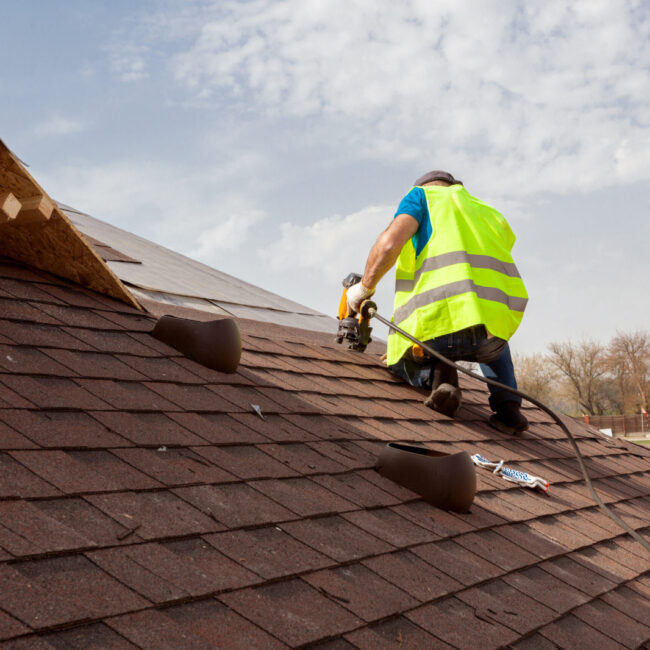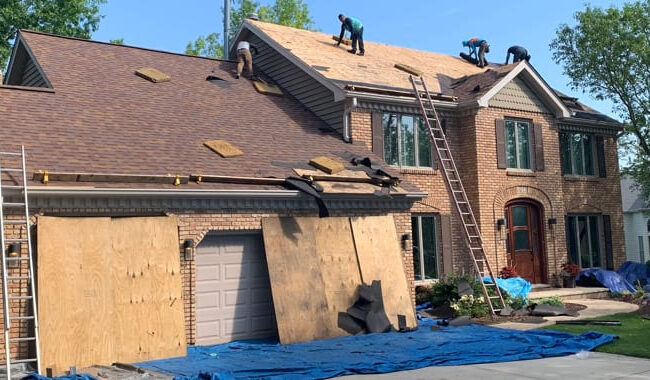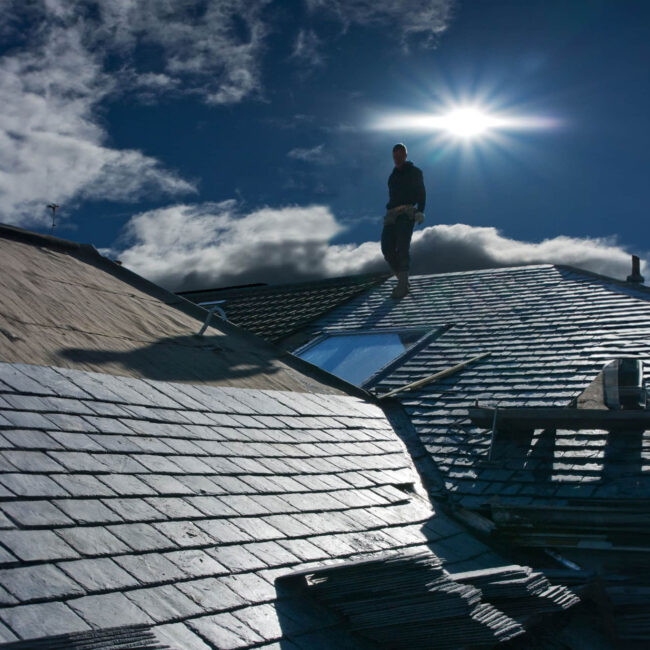Address
126 Maple Ave, Wallington, NJ 07057, USA
Work Hour
Open 24h




Roof replacement involves removing the old roofing materials from a building and installing new ones. This process is essential for maintaining the structural integrity and safety of a building. It typically involves several steps: inspecting the existing roof, removing old shingles or other materials, repairing any damaged decking, installing new underlayment for waterproofing, and laying new shingles or other chosen roofing materials. Roof replacement can improve a building’s energy efficiency, increase its value, and enhance its aesthetic appeal. This project is usually carried out by professional roofing contractors to ensure quality and compliance with local building codes.
Roof replacement is a comprehensive process that involves stripping away old roofing materials from a building and installing new ones to ensure the structure remains weatherproof and aesthetically pleasing. This critical maintenance task is usually necessary when a roof is beyond repair, often due to age, severe weather damage, or when upgrading for better functionality and energy efficiency.
The process begins with a thorough inspection by professional roofing contractors to assess the extent of wear and damage, ensuring that the underlying structure, like the roof decking, is still sound. Following the inspection, the old roofing materials—typically shingles, tiles, or metal—are carefully removed. Any damaged or rotted decking discovered during this phase is repaired or replaced to provide a solid foundation for the new roof.
Subsequently, a new underlayment, which is a water-resistant or waterproof barrier, is laid down to protect the decking from moisture. The choice of new roofing materials typically depends on the homeowner’s preference, local climate, and budget, and can range from asphalt shingles and clay tiles to metal roofing and slate.
Roof replacement not only enhances a building’s curb appeal but also boosts its resale value and can significantly improve energy efficiency by incorporating modern materials and technologies. The project usually concludes with the cleanup and disposal of old materials, adhering to local regulations and environmental standards. This extensive project requires skilled labor and careful planning to ensure that the new roof will last for many years, providing safety and comfort to the inhabitants.
The process of roof replacement involves several critical steps to ensure that the new roof is properly installed, functional, and aesthetically pleasing. Here’s a detailed description of the process along with a list of the main steps:
Inspection and Assessment: The first step is a detailed inspection of the existing roof to determine the extent of damage and the need for replacement. This assessment helps in planning the scope of work, materials needed, and safety measures.
Choosing Materials: Once the need for replacement is confirmed, the appropriate roofing materials are selected based on the climate, house style, and budget. Common choices include asphalt shingles, metal, tile, or slate.
Removing Old Roofing: The existing roofing materials are carefully removed. This step must be done cautiously to avoid damage to the structure and underlying decking.
Repairing Damaged Decking: After removal of the old materials, the roof decking is inspected for any signs of water damage or rot. Any compromised sections are repaired or completely replaced to provide a solid foundation for the new roof.
Installing Underlayment: A water-resistant or waterproof barrier material is installed over the decking. This underlayment is crucial for preventing moisture penetration and providing an extra layer of protection.
Installation of New Roofing Materials: The new roofing materials are then installed. The method of installation varies depending on the type of material being used.
Sealing and Waterproofing: Additional components like flashing, ridge vents, and other roofing accessories are installed and sealed to prevent leaks and ensure proper ventilation.
Cleanup and Final Inspection: After the installation, the site is cleaned of all debris, and a final inspection is conducted to ensure that the new roof is installed correctly and without any issues.
Here is the summarized list of steps:
This structured approach ensures that the roof replacement is thorough and enhances the longevity and functionality of the new roof.
